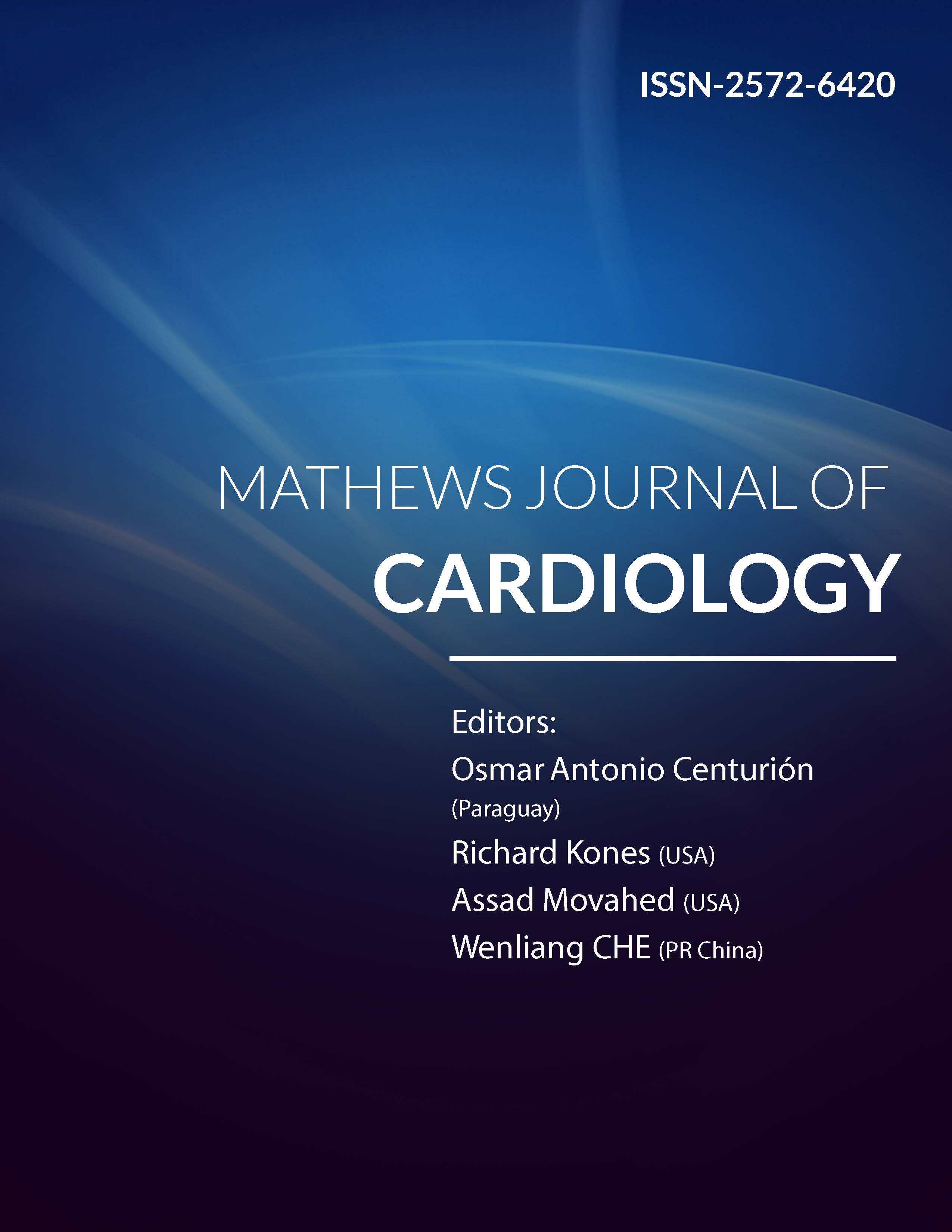
Information Links
Previous Issues Volume 1, Issue 2 - 2016
Abolition of Ventricular Tachycardia by Revascularization: When Blood Flow is All You Need to Terminate a Recurrent Ischemic Ventricular Arrhythmia
Osmar Antonio Centurión1
1Department of Health Sciences’s Investigation, Sanatorio Metropolitano. Fernando de la Mora. Paraguay, Cardiology Department. First Department of Internal Medicine. Clinic Hospital. Asunción National University. San Lorenzo, Paraguay.
Corresponding Author: Osmar Antonio Centurión, Professor of Medicine, Asuncion National University, Department of Health Sciences’s Investigation, Sanatorio Metropolitano, Teniente Ettiene 215 c/ Ruta Mariscal Estigarribia, Fernando de la Mora, Paraguay,
Tel: 595 21 585 540; E-Mail: [email protected]
Received Date: 26 Aug 2016
Accepted Date: 29 Aug 2016
Published Date: 13 Sep 2016
Copyright © 2016 Centurión OA
Citation: Centurión OA. (2016). Abolition of ventricular tachycardia by revascularization: When blood flow is all you need to terminate a recurrent ischemic ventricular arrhythmia. Mathews J Cardiol. 1(2): 006.
ABSTRACT
Active vascular events such as spasm, plaque rupture or thrombosis in the setting of acute coronary syndromes precipitate fatal arrhythmias due to acute ischemia. Lethal ventricular tachycardia (VT) in the setting of ischemic heart disease (IHD) results either from acute ischemia or from chronic scar. Ischemia produces several intra, and extra-cellular changes in ionic concentration and acid-base balance. In this context, the surviving Purkinje fibers exhibit several electrophysiological changes, namely, abbreviated action potentials of reduced amplitude, and depolarized membrane potentials, and reduced conduction velocity. These biochemical and electrophysiological disturbances act in accordance with a number of probable genetic predispositions. The resultant ischemia-induced VT may be suppressed by revascularization of the occluded vessel ameliorating the ischemic tissue. Sustained VT in the peri-infarction period may develop due to transient arrhythmogenic phenomena in ischemic and infarcting tissue such as the following: abnormal automaticity, triggered activity, and re-entrant circuits created by heterogeneous conduction and repolarization. Combining different diagnostic techniques, a relation between myocardial ischemia and induction of ventricular arrhythmias can be demonstrated in patients with IHD. Coronary revascularization must be the main goal and may constitute definitive therapy in certain patients with ischemic ventricular arrhythmias. This pure anti-ischemic therapeutic strategy seems to be justified in certain cases of patients with preserved left ventricular function, demonstrable reversible ischemia and non-inducible VT pre and post revascularization. In all other instances an additional treatment with antiarrhythmic drugs and an implantable cardioverter defibrillator is paramount.